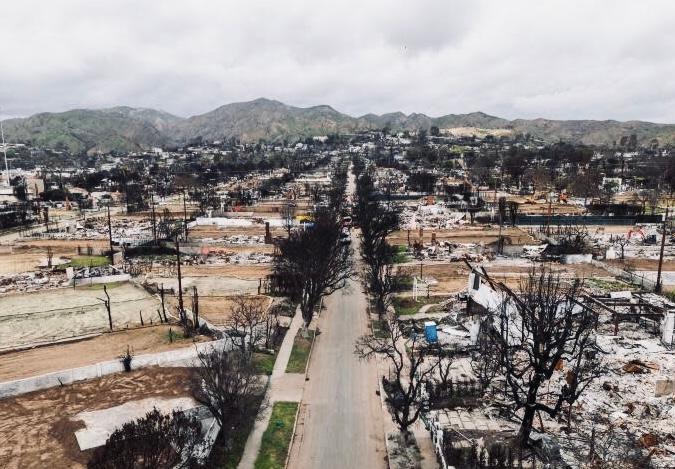
California Insurance Scandal:
- 📜🔥- Major insurers, including State Farm, face explosive lawsuits alleging coordinated conspiracy.
- 🏚️⚠️- Allegations claim intentional efforts to drive homeowners into the costly California FAIR Plan.
- 🔍🏛️- Calls intensify for immediate investigation and resignation of Insurance Commissioner Ricardo Lara.
By Samuel Lopez – USA Herald
CALIFORNIA – In the wake of the devastating January wildfires, California homeowners have filed two groundbreaking lawsuits accusing major insurers—including industry giant State Farm—of engaging in a “nefarious conspiracy” and “cartel-like behavior” by deliberately colluding to push customers toward the state’s last-resort insurance option, the California FAIR Plan. This explosive legal battle, filed in the Los Angeles Superior Court, shines a glaring spotlight on insurers’ practices and has prompted widespread calls for accountability, particularly aimed at California Insurance Commissioner Ricardo Lara.
The litigation comes at a pivotal moment as California grapples with an escalating insurance crisis following recent catastrophic fires. According to the filed complaints, insurers systematically conspired to eliminate competition, intentionally funneling thousands of policyholders into the FAIR Plan, thereby allowing them to capitalize on high premiums without providing adequate coverage. Plaintiffs assert they were ready and willing to pay for better policies but found themselves pushed onto the limited FAIR Plan, significantly compromising their ability to recover post-disaster.
The group complaint and demand for a jury trial, claims that major insurers engaged in a “nefarious conspiracy” to “eliminate competition between them,” ultimately “intentionally and systematically” compelling homeowners to rely on the California FAIR Plan.
Additionally, lawyers filed a separate class action lawsuit the same day, making identical allegations.
Michael J. Bidart of Shernoff Bidart Echeverria LLP, representing the plaintiffs, said in a statement. “Insurance is a product that homeowners hope never to need, but rely on for peace of mind in normal times and for critical help rebuilding after a catastrophe.”
“The complaints allege that, by colluding to push plaintiffs and so many like them to the FAIR Plan, the defendants have reaped the benefits of high premiums while depriving homeowners of coverage that they were ready, willing, and able to purchase to ensure that they could recover after a disaster like January’s wildfires.” Bidart said.
Renowned for his relentless pursuit of justice against formidable insurance giants, Mr. Bidart’s legacy shines through groundbreaking achievements. In State Farm v. Superior Court (1996), he helped establish conclusively, that Business & Professions Code §17200 applies to insurance companies engaging in unfair business practices in California. Following the 1994 Northridge earthquake, his dedication secured over $300 million in relief for impacted victims.
The current accusations have resonated loudly within consumer advocacy groups. Jamie Court, president and chairman of the board of Consumer Watchdog, a Santa Monica-based, progressive nonprofit, called this alleged collusion a direct assault on consumer rights, emphasizing, “This was clearly a concerted attempt by the entire industry to push people in high-risk areas to lower benefit policies, and at the same time keep collecting higher premiums from everyone else.”
According to Court, representatives of the major insurance companies meet regularly to “discuss issues that we would consider to be market issues,” including the administration of the FAIR Plan. “This is exactly the type of action needed to break up what is clearly cartel-like behavior,” Court said.
Consumer advocates across the State, are further criticizing insurers’ actions, asserting that, Homeowners should not be on the hook because insurance companies abandoned these neighborhoods and dumped homeowners onto the FAIR Plan.
Amid these mounting allegations, scrutiny has also intensified around Insurance Commissioner Ricardo Lara. Critics argue Lara failed to prevent insurers’ alleged anti-competitive behavior and are demanding an immediate government investigation. Growing public outrage has sparked calls for Lara’s resignation if evidence of wrongdoing or negligence emerges. Gabriel Sanchez, representing Lara’s office, maintains, “The Department of Insurance is not involved in this matter as a party and cannot comment on the lawsuit. Our focus remains on protecting California consumers.”
The lawsuits build upon recently filed cases concerning insurers’ management of the aftermath of the Eaton and Palisades fires. These include actions against Insurance Commissioner Ricardo Lara, named as a defendant and the California FAIR Plan—specifically addressing issues related to smoke damage—California’s embattled insurance option of last resort.
The FAIR Plan, established after the 1965 Watts riots to offer coverage to high-risk areas where traditional insurers refuse to operate, has seen a staggering rise in demand. Policyholders surged from 200,000 in 2020 to nearly 560,000 by March 2025. Already strained by catastrophic claims, the plan faces a $4 billion deficit from recent wildfire damages, compelling Lara to authorize a controversial $1 billion assessment on private insurers.
Private insurers, including State Farm and Allstate, can pass 50% of these costs back to their own customers statewide, not just those in high-risk areas. This practice has stoked further criticism, suggesting that insurers and regulators unfairly distribute the financial burden across all Californians.
The new lawsuits specifically target the state’s largest insurers, alleging their strategic abandonment of high-risk zones directly created the current FAIR Plan crisis. Plaintiffs seek triple damages for economic losses and punitive damages intended to discourage similar future actions.
Hilary McLean, a spokesperson for the FAIR Plan, commented on the organization’s stance, explaining, “While the California FAIR Plan is not named in these lawsuits, we do not comment on active litigation.”
Further complicating matters, State Farm recently requested a 17% emergency rate increase—originally seeking 22%—claiming financial stabilization was essential to maintain its California operations. This request has fueled additional public outrage, especially among fire victims still grappling with insurer delays and denials.
As Californians demand accountability and transparency, pressure mounts on lawmakers and regulators to address systemic failures and alleged misconduct. Calls for reform are reaching fever pitch, highlighting the urgent need to confront insurers’ practices and potentially overhaul oversight mechanisms.
For comprehensive insights, exclusive analyses, and insider tips on insurance litigation and consumer protection, join me on Patreon.
Follow us on X @RealUSAHerald
Fact-Check & Sources:


